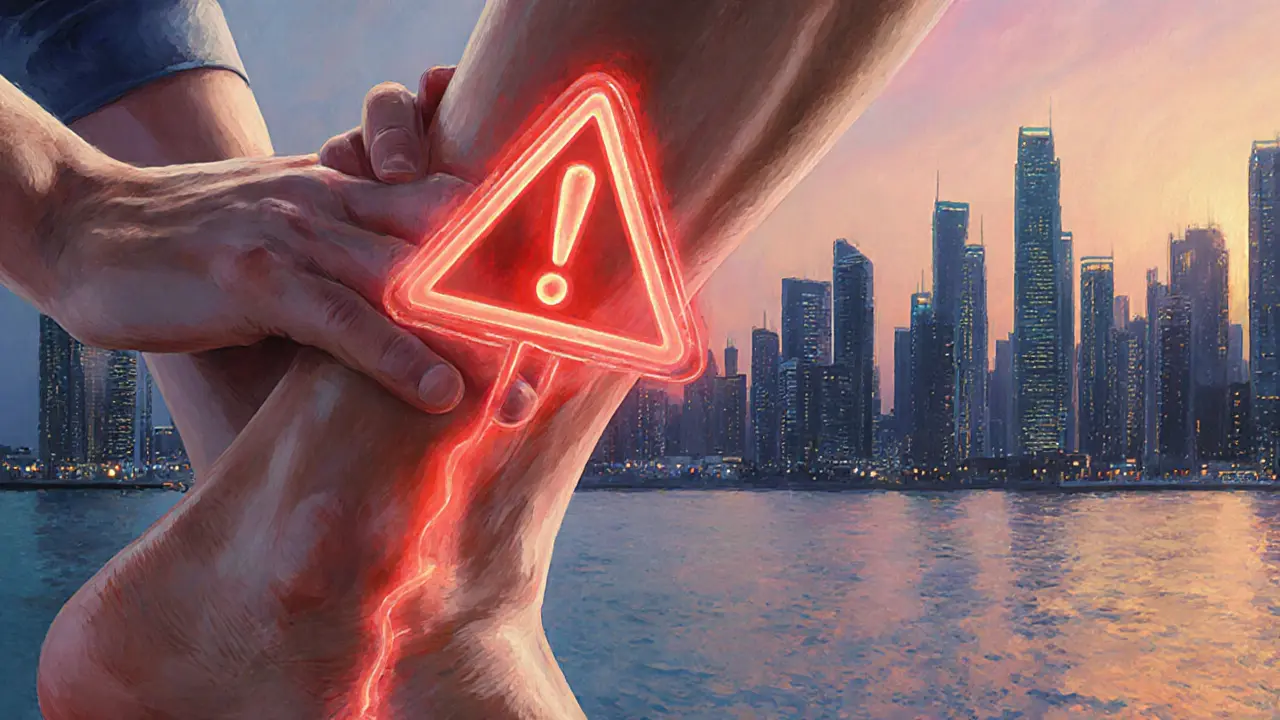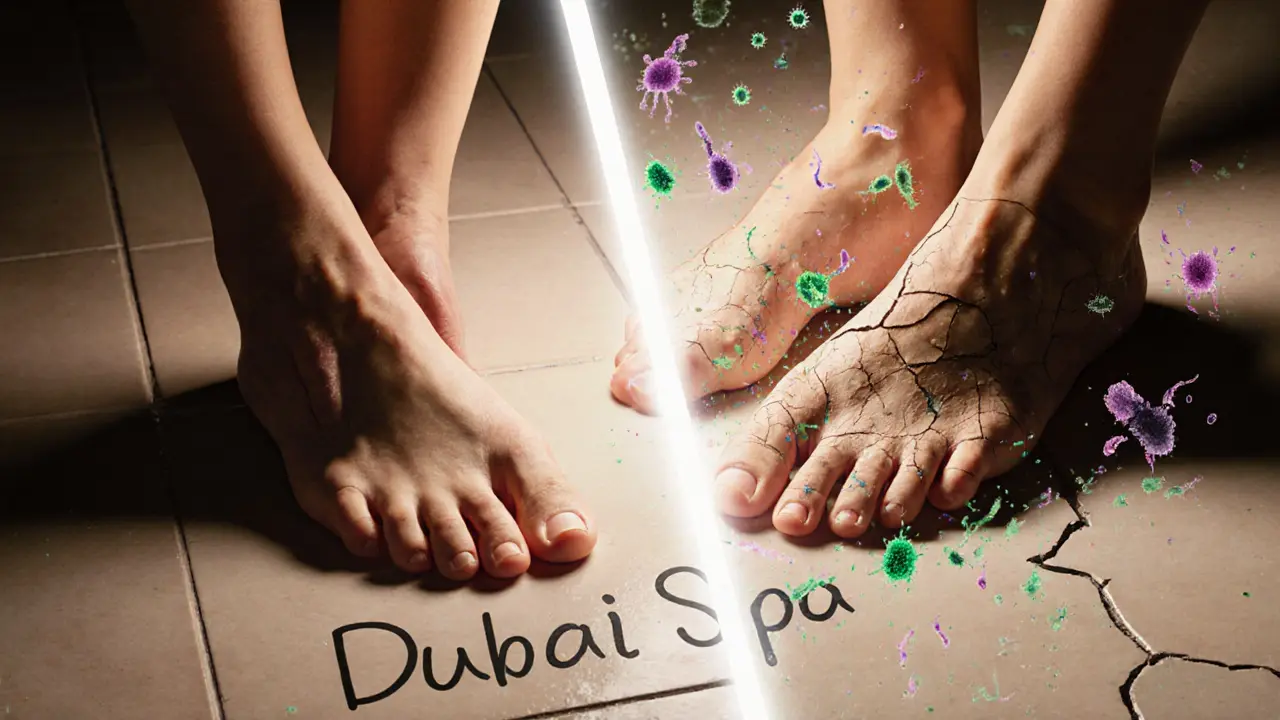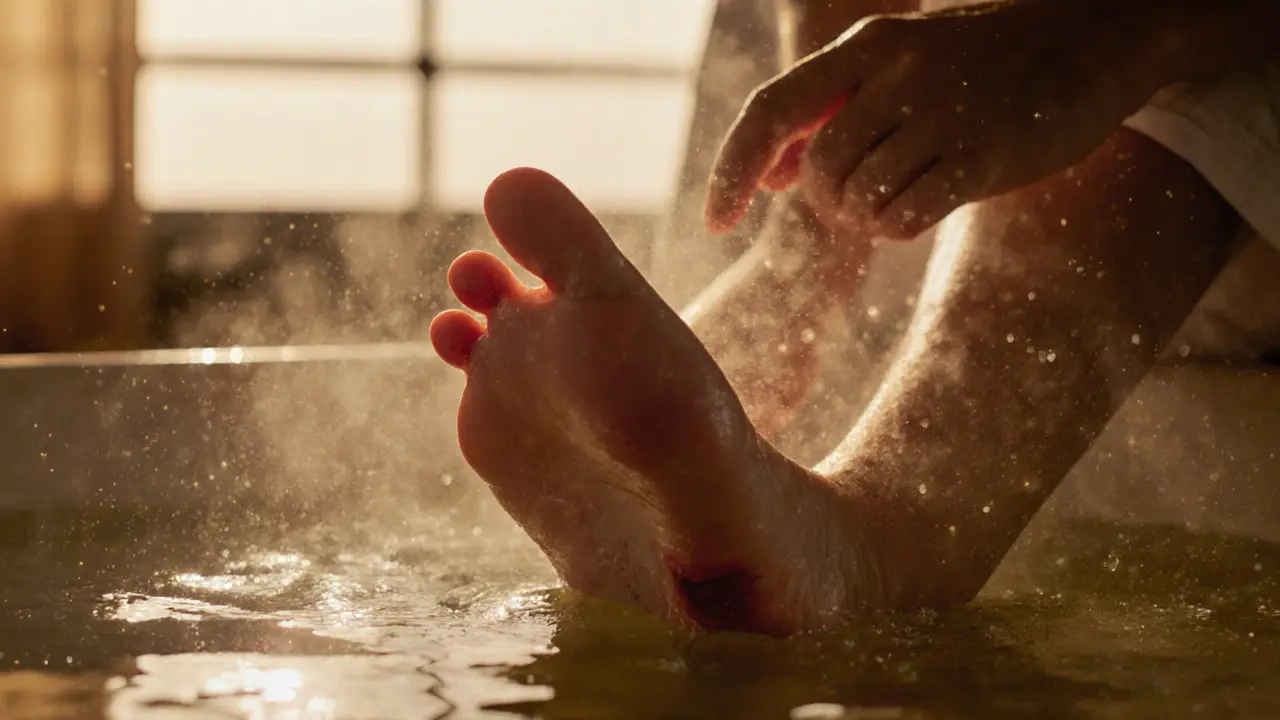You’ve just finished a long day in the Dubai heat, your feet are swollen, aching, begging for relief. You walk into a spa, ready to sink into a warm foot bath and let someone work their magic. But wait-foot massage isn’t always the answer. In fact, doing one at the wrong time can make things worse, not better.
Here’s the truth: foot massages are great for relaxation, circulation, and easing tension. But they’re not a one-size-fits-all fix. In Dubai’s humid climate, where people spend hours on their feet-whether walking through the Mall of the Emirates, standing at a construction site in Jebel Ali, or commuting across the city’s endless metro lines-knowing when to skip the massage could save you from pain, infection, or even hospital visits.
When You Should Avoid a Foot Massage
Not every foot ache needs a rubdown. Some conditions make foot massage dangerous. If you’re dealing with any of these, hold off-no matter how tempting that spa deal looks.
- You have an open wound, cut, or blister on your foot. Even a tiny cut can become infected if pressure is applied, especially in Dubai’s warm, dusty environment. Bacteria thrive here. A massage could push dirt or sweat into the wound, turning a minor scrape into a serious infection.
- You have a blood clot (DVT) in your leg or foot. This is rare but deadly. Massage can dislodge a clot, sending it to your lungs or heart. If you’ve recently had surgery, been on long flights, or are on birth control and notice swelling, redness, or warmth in one leg, skip the massage and see a doctor.
- You have active gout. If your big toe is swollen, red, and burning, you’re likely in a gout flare. Massage will only make the pain worse. Gout is caused by uric acid crystals in the joint-pressure doesn’t dissolve them. It just hurts more.
- You have severe diabetes with neuropathy. Many people in Dubai have undiagnosed or poorly managed diabetes. If you can’t feel your feet properly, you might not notice if the therapist presses too hard. That can lead to unnoticed injuries, ulcers, or even amputation in extreme cases. Always check with your doctor first.
- You have a foot infection-like athlete’s foot, fungal nails, or cellulitis. A massage spreads the infection. In Dubai’s high-humidity spas, fungi love damp towels and warm water. If your skin is peeling, itchy, or has yellow, thickened nails, don’t risk it.
- You’re pregnant and in your first trimester. While many pregnant women safely get foot massages later on, the first 12 weeks are delicate. Some pressure points on the feet are linked to uterine contractions. Even if your therapist says it’s fine, it’s better to wait until your second trimester.
- You have a fever or are sick. Your body is fighting off something. Adding stress through massage can weaken your immune response. Wait until you’re fully recovered.
Why This Matters in Dubai
Dubai isn’t just another city-it’s a place where wellness services are everywhere. From luxury resorts on Palm Jumeirah to budget salons in Deira, foot massages are marketed as quick fixes. But not all providers are trained to recognize contraindications. I’ve seen clients come in with swollen feet after a massage, thinking it was just soreness-only to find out they had an undiagnosed DVT.
Also, Dubai’s climate plays a role. High temperatures mean more swelling, more sweat, more bacteria. A foot bath that’s not properly sanitized? That’s a breeding ground for infections. And many tourists don’t realize how quickly a minor issue can escalate here.
What Happens If You Ignore the Warnings?
Let’s say you have a small cut on your heel and you get a massage anyway. The therapist doesn’t notice it. The warm water opens your pores. The oils and pressure push bacteria deeper. Within 48 hours, the area turns red, hot, and painful. By day three, you’re in the emergency room at Mediclinic City Hospital with cellulitis-requiring IV antibiotics.
Or imagine you have early-stage diabetes. You don’t feel the pressure from the therapist’s thumbs digging into your arch. A week later, you notice a sore that won’t heal. It grows. Then it smells. That’s a diabetic ulcer-and in Dubai, one in five diabetics with foot ulcers ends up needing amputation if not caught early.
These aren’t hypotheticals. They happen here. Regularly.

When Is a Foot Massage Safe-and Even Helpful?
Good question. A foot massage is perfect when:
- You’ve been on your feet all day and feel general fatigue, not sharp pain.
- Your feet feel tight but aren’t swollen, red, or broken.
- You’re not sick, pregnant in the first trimester, or recovering from surgery.
- You have mild plantar fasciitis (as long as there’s no acute flare-up).
- You’re using it for relaxation, not pain relief.
In Dubai, many people use foot massages as part of their weekly self-care routine-after a long workweek, before a big event, or just to unwind after a desert safari. That’s fine. Just make sure you’re not masking something deeper.
How to Choose a Safe Foot Massage Spot in Dubai
Not all spas are created equal. Here’s how to pick one that won’t harm you:
- Look for licensed therapists. Ask to see their certification. Many places in Dubai hire untrained staff to cut costs.
- Check the cleanliness. Are the foot baths cleaned between clients? Do they use disposable liners? Are towels fresh and sealed?
- Ask if they know contraindications. A good therapist will ask you about your health before starting. If they don’t, walk out.
- Stick to reputable chains like The Spa at Burj Al Arab, Talise Spa at Jumeirah, or even trusted local spots like Oasis Spa in Al Barsha. They have clear protocols.
- Avoid street-side kiosks near Deira or Al Quoz unless you’re certain of their hygiene standards.
Foot Massage vs. Reflexology: What’s the Difference?
| Feature | Foot Massage | Reflexology |
|---|---|---|
| Purpose | Relax muscles, improve circulation, reduce tension | Target specific pressure points believed to connect to organs |
| Pressure | General, soothing | Firm, focused on points |
| Best for | General fatigue, sore feet | Stress, headaches, digestive issues |
| Risks if done wrong | Aggravates injuries, spreads infection | Can trigger unwanted reactions in pregnancy or chronic illness |
| Common in Dubai? | Yes-widely available | Yes-often marketed as "holistic healing" |
Reflexology sounds more "spiritual," but it’s not safer. In fact, because it targets specific points, it can be riskier if you have conditions like pregnancy or high blood pressure. Always disclose your full health history-even if the therapist doesn’t ask.

What to Do If You’ve Already Had a Massage and Feel Worse
It happens. Maybe you ignored the redness. Maybe you thought the pain was just "deep tissue work." Now you’re worried.
Here’s what to do:
- Stop massaging or applying heat. Ice the area if it’s swollen.
- Check for signs of infection: red streaks, pus, fever, increasing pain.
- If you have diabetes or suspect a blood clot-go to a clinic immediately. Don’t wait.
- Call your doctor. Bring details: where you got the massage, how long it lasted, what was done.
- Report the spa if you suspect unclean practices. Dubai’s Department of Health tracks complaints.
Early action prevents complications. In Dubai, clinics like Aster Clinic and NMC Royal have walk-in foot care services. Don’t delay.
Frequently Asked Questions
Can I get a foot massage if I have flat feet?
Yes-flat feet aren’t a contraindication. In fact, a gentle foot massage can help relieve tension in the arches. But avoid deep pressure if you’re in pain. Use supportive shoes and consider orthotics. Massage helps, but it doesn’t fix structural issues.
Is it safe to get a foot massage after a long flight in Dubai?
It depends. If your legs feel heavy but aren’t swollen, red, or painful, a light massage can help circulation. But if one calf is swollen, warm, or tender-don’t massage it. That could be a blood clot. Get checked first. Many Dubai airports now offer free leg stretches and compression socks for long-haul travelers-use those instead.
Do foot massages help with plantar fasciitis?
They can help-but only between flares. During a flare, massage makes it worse. Wait until the sharp pain fades, then use gentle rolling with a tennis ball or light massage to loosen tight tissue. Combine it with stretching and proper footwear. Many physiotherapists in Dubai offer targeted rehab plans.
Can children get foot massages in Dubai?
Yes, but only with a pediatric-trained therapist. Kids’ feet are still growing. Avoid deep pressure or reflexology techniques. Light, playful touch is fine for relaxation after sports or school. Always ask if the therapist has experience with children.
Are there any foot massage apps in Dubai I can trust?
Apps like Wellbe and SpaFinder list vetted spas with verified licenses. Avoid random services booked through WhatsApp or Instagram. Many unlicensed operators use these platforms. Always check reviews, ask for the therapist’s license number, and confirm they’re registered with Dubai’s Department of Health.
Final Thought
A foot massage isn’t just a luxury-it’s a form of care. And like any care, it needs to be used wisely. In Dubai, where wellness is a big business, it’s easy to get swept up in the hype. But your feet carry you through this city’s heat, crowds, and chaos. Treat them right. Know when to say no. And when in doubt? Rest them. Elevate them. Drink water. And wait.







October 31, 2025 AT 16:16
Foot massages aren't magic. They're physical interventions with real risks, especially in environments like Dubai where hygiene standards vary wildly. The article nails it-don't massage an open wound, don't massage a clot, don't massage gout. Simple. No fluff. If you can't feel your feet, you shouldn't be getting pressure applied. Period.